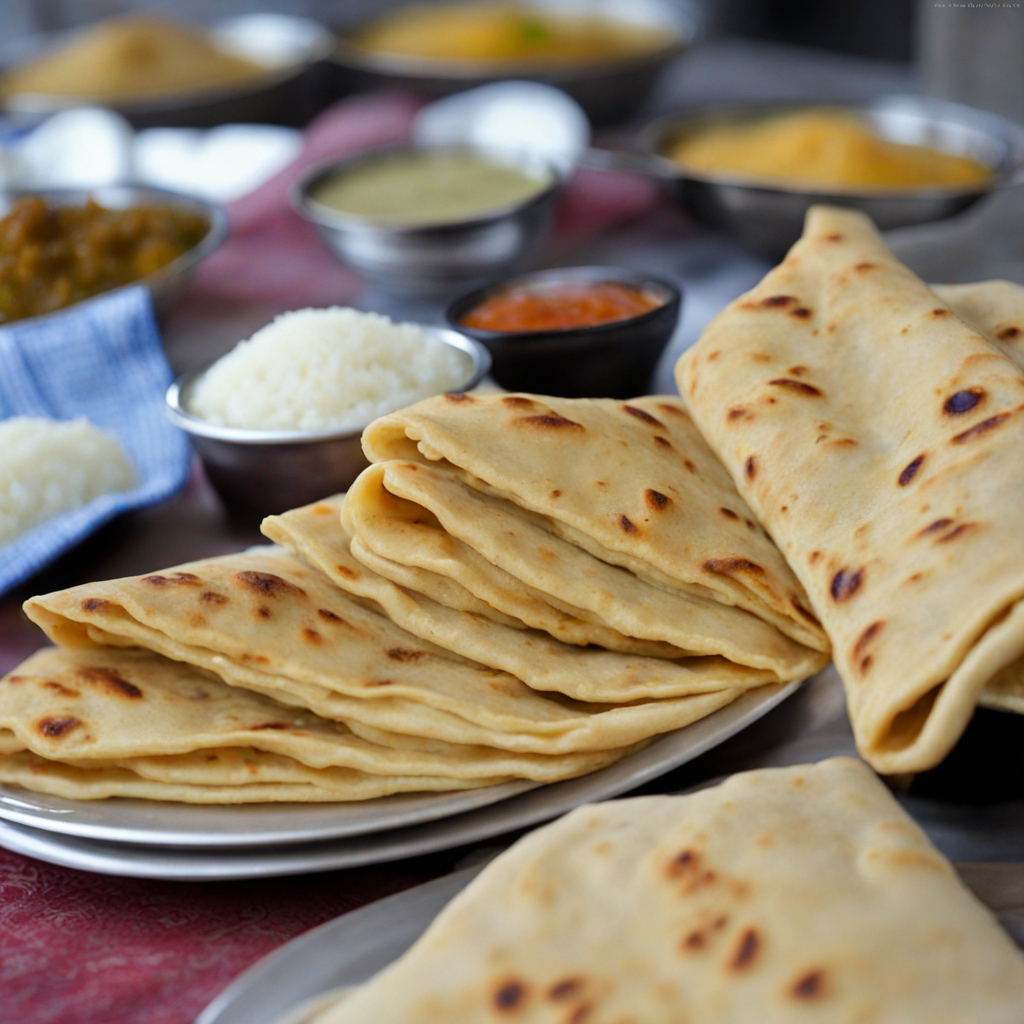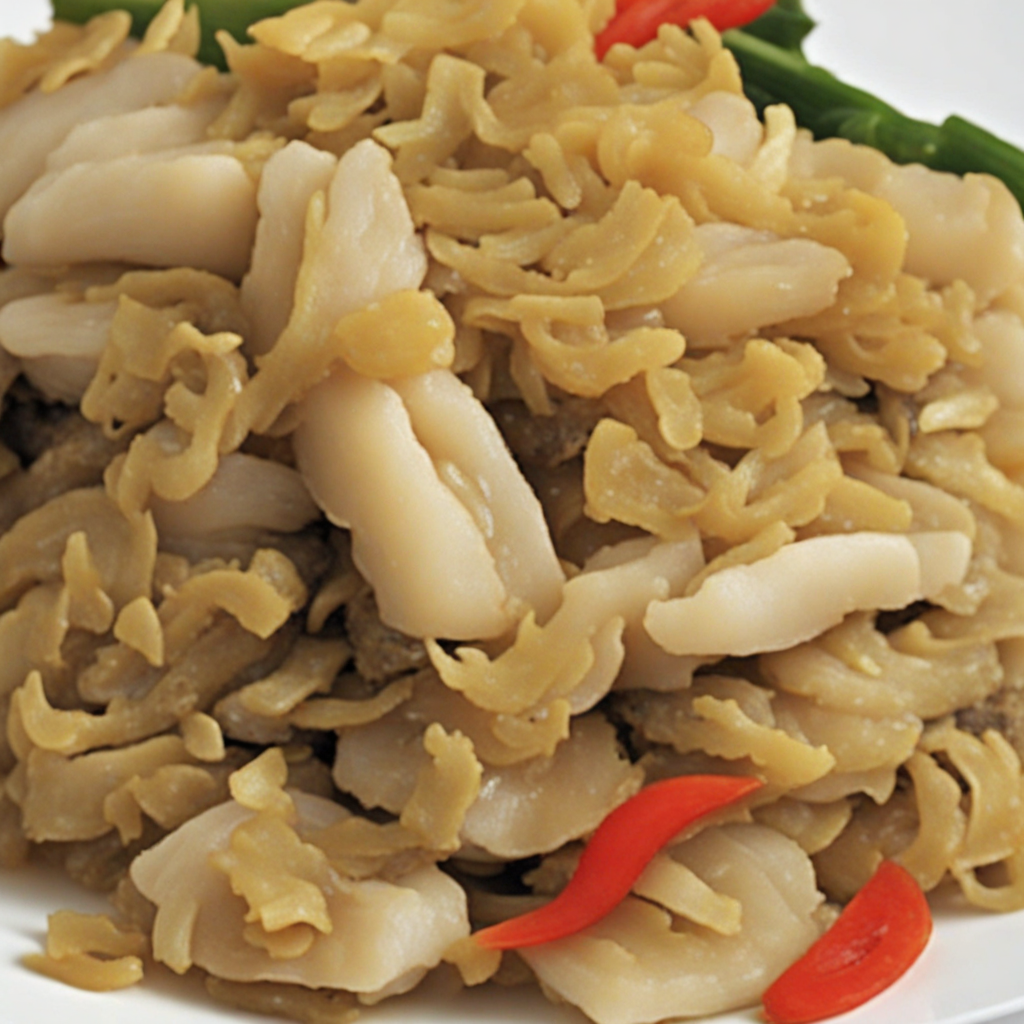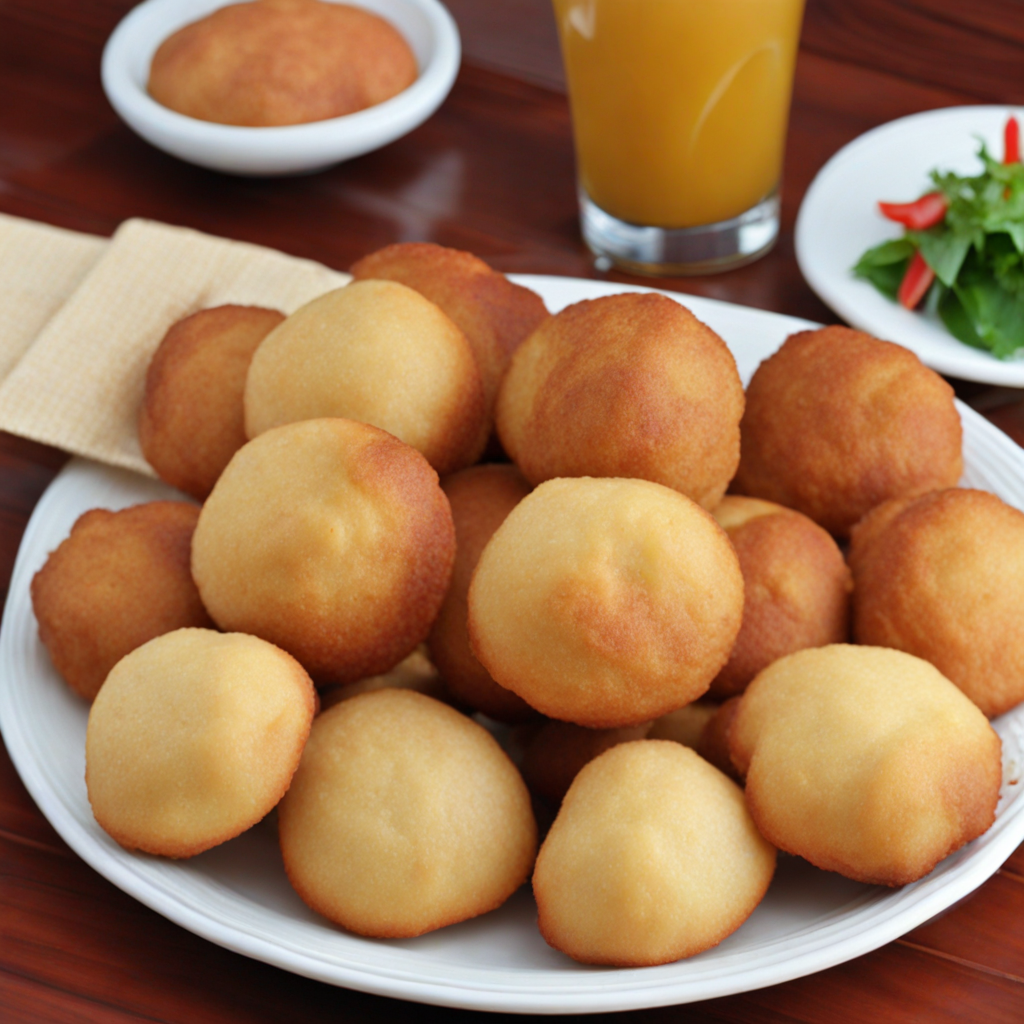Roti
Roti is a delightful dish that reflects the vibrant culinary traditions of Antigua and Barbuda, showcasing a harmonious blend of flavors and textures. This flatbread, often made from wheat flour, is soft and pliable, resembling a tortilla or a naan. The preparation process involves kneading the dough and cooking it on a hot griddle, resulting in a warm, slightly chewy exterior that envelops a variety of savory fillings. Roti serves as a versatile foundation for numerous fillings, each offering a unique taste experience that captures the essence of Caribbean cuisine. Common fillings for roti include curried meats such as chicken, goat, or beef, combined with aromatic spices and vegetables, creating a hearty and satisfying meal. The curry is rich and fragrant, featuring notes of cumin, coriander, and turmeric, which beautifully infuse the tender meat and vegetables. Vegetarian options are also popular, with fillings like chickpeas, potatoes, and spinach, all seasoned to perfection. Each bite delivers a burst of flavor, making it a favorite among locals and visitors alike. Roti is typically served with a side of chutney or a fresh salad, enhancing its appeal and offering a refreshing contrast to the warm, spiced filling. This dish embodies the spirit of sharing and community, as it’s often enjoyed in a casual setting, allowing friends and family to gather and savor the rich flavors together. Whether consumed as a quick street food snack or as part of a more elaborate meal, roti provides a delicious gateway into the culinary heritage of Antigua and Barbuda, inviting food lovers to explore and indulge in its unique taste.
How It Became This Dish
Origins of Roti Roti, a cherished staple in Antigua and Barbuda, has roots that trace back to the Indian subcontinent, specifically to the regions of India and Pakistan. It was introduced to the Caribbean by Indian indentured laborers who arrived on the islands in the late 19th century, following the abolition of slavery. The British colonial system sought labor to replace the formerly enslaved population, and thus, Indian workers were brought in to cultivate sugarcane and other crops. This migration laid the groundwork for the culinary fusion that would characterize Caribbean cuisine, incorporating Indian flavors and techniques into the local food culture. The word "roti" itself comes from the Hindi word "रोटी," which refers to bread. Traditionally, roti is made from whole wheat flour and water, rolled into thin discs, and cooked on a hot griddle or tawa. The simplicity of its ingredients belies its versatility and significance in the diets of many Caribbean people. In Antigua and Barbuda, roti quickly became a favored accompaniment to various dishes, serving as both a staple food and a symbol of the blending of cultures. \n\n Cultural Significance In Antigua and Barbuda, roti is more than just a food item; it carries cultural significance and represents the resilience of the Indian community on the islands. The dish is often served during communal gatherings, celebrations, and family meals, symbolizing unity and shared heritage. Roti is typically filled with curried meats or vegetables, reflecting the Indian culinary influence while also incorporating local ingredients and flavors. The act of making roti is often a communal activity, with family members gathering to prepare the dough, roll out the flatbreads, and cook them on the griddle, reinforcing social bonds. Roti's popularity has transcended its origins, becoming an integral part of Antiguan and Barbudan culinary identity. It is commonly served in homes, restaurants, and food stalls, often accompanied by curried chicken, goat, or vegetables, showcasing the harmonious blending of Indian and Caribbean flavors. Festivals and cultural events often feature roti as a highlight, further embedding it into the social fabric of the islands. As a result, roti not only nourishes the body but also nourishes cultural pride and community cohesion. \n\n Development Over Time As time progressed, the preparation and presentation of roti in Antigua and Barbuda have evolved, showcasing a dynamic culinary landscape. Traditional versions of roti have given way to a variety of styles, reflecting the influence of globalization and the creativity of local chefs. Variations such as "buss up shut," a flaky, torn roti originating from Trinidad and Tobago, have also found their way into Antiguan cuisine, showcasing the interconnectedness of Caribbean cultures. The introduction of new ingredients and flavors has diversified the types of fillings used in roti. While curry remains the most common filling, contemporary interpretations now include options like jerk chicken, shrimp, and even vegetarian or vegan alternatives. This evolution is a testament to the adaptability of roti, allowing it to resonate with younger generations who seek to express their culinary identity while honoring tradition. Furthermore, the rise of food tourism in Antigua and Barbuda has brought increased attention to local cuisine, including roti. Tourists are often eager to explore the rich culinary landscape of the islands, leading to a renewed interest in traditional dishes. This has prompted many chefs and home cooks to share their family recipes and techniques, ensuring that the legacy of roti continues to thrive amidst the changing culinary scene. \n\n The Role of Roti in Modern Society In contemporary Antiguan society, roti serves as a bridge between generations, connecting the past with the present. Many families have their own cherished recipes that have been passed down through generations, each with its unique twist. The preparation of roti often involves storytelling, with elders sharing tales of their ancestors and the journey of Indian laborers to the Caribbean. This oral tradition enriches the experience of making and consuming roti, reinforcing its cultural significance as a vessel for memory and heritage. Moreover, roti's adaptability has made it a popular choice for various dietary preferences, accommodating a growing interest in health-conscious eating. Whole wheat and gluten-free options have emerged, catering to a diverse population that values both tradition and modern dietary needs. This evolution highlights the resilience of roti as it continues to find its place in a rapidly changing world, proving that it is not just a relic of the past but a living part of the culinary narrative in Antigua and Barbuda. \n\n Roti in the Global Context The journey of roti from its Indian origins to its place in Antiguan and Barbudan cuisine also reflects broader global trends in food culture. As the world becomes more interconnected, the exchange of culinary practices has become commonplace, leading to the fusion of flavors and techniques. Roti exemplifies this phenomenon, showcasing how a simple flatbread can adapt and thrive in different cultural contexts. In recent years, there has been a growing interest in Caribbean cuisine globally, with chefs and food enthusiasts eager to explore the diverse flavors of the region. Roti has gained recognition beyond the Caribbean as a beloved dish, often featured in international food festivals and culinary events. This exposure not only highlights the culinary heritage of Antigua and Barbuda but also allows for a greater appreciation of the islands' rich cultural tapestry. \n\n Conclusion Roti remains a vibrant and essential part of the culinary landscape in Antigua and Barbuda, embodying the island's history, culture, and community spirit. Its journey from India to the Caribbean is a testament to the resilience of the Indian diaspora and the power of food to transcend geographical boundaries. As roti continues to evolve, it will undoubtedly remain a cherished staple, nourishing both the body and the soul while celebrating the rich interconnectedness of cultures that define the Caribbean culinary experience.
You may like
Discover local flavors from Antigua And Barbuda







